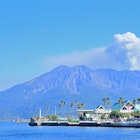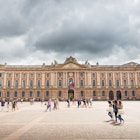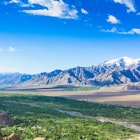
Jul 14, 2025 • 6 min read
Head off the usual tourist trail on one of the world's best boat journeys between Japan's sub-tropical Amami Islands.

Jul 14, 2025 • 6 min read
Head off the usual tourist trail on one of the world's best boat journeys between Japan's sub-tropical Amami Islands.

Jul 14, 2025 • 6 min read
Girona is the second-largest city in Catalonia and a hub of culture, gastronomy and history.

Jul 14, 2025 • 8 min read
This dynamic student city offers exciting art, hearty cuisine, boat trips and urban beaches – only a few of the best things to do in Toulouse.

Jul 14, 2025 • 12 min read
The national religion of England isn’t Christianity, it’s football. Here's how to immerse yourself in football culture on a trip to England.

Jul 14, 2025 • 12 min read
The Natural History Museum and Science Museum have been entertaining and educating London for over a century. Here's how to get more from your visit.

Jul 13, 2025 • 5 min read
Make the most of your trip to the Spanish capital with these savvy spending tips.

Jul 13, 2025 • 10 min read
Tokyo has one of the best public transport systems in the world, and we've got all the insider info you need to use it.

Jul 13, 2025 • 4 min read
For fun-filled summer festivals and snow-covered markets in Old Town Square, book a trip to Prague. Here are the best times to visit.

Jul 13, 2025 • 9 min read
Michigan’s Upper Peninsula features wildlife refuges, beaches and rich forests, making it ideal for a digital detox. Here's how to plan your trip.

Jul 13, 2025 • 5 min read
One of our editors shares her highlights from a week of hiking, whale watching and fabulous food in the alluring Azores.

Jul 13, 2025 • 12 min read
Get to know the real Philadelphia through its vibrant neighborhoods, with these top places that are perfect for lovers of beer, food, music and culture.

Jul 13, 2025 • 3 min read
A vision of pastel with tropical flair, this photogenic route takes you by many of South Beach's most eye-catching Art Deco buildings.

Jul 12, 2025 • 10 min read
Miami is home to some of Florida's best beaches, from popular party hot spots to stretches of sand for family-friendly fun. These are the pick of the best.

Jul 12, 2025 • 5 min read
Miami's art scene brings you Art Basel, mural-covered walls and fascinating installations. Here are seven of the top places to enjoy artworks.

Jul 12, 2025 • 7 min read
With world-class exhibitions and no admission fees, these Los Angeles institutions explore science, art, history and more.

Jul 12, 2025 • 8 min read
Pick a wellness experience in India that works for you with this guide to treatments and the best places to try them.

Jul 12, 2025 • 7 min read
Follow these 23 tips on etiquette and customs in Sri Lanka and your visit to this pearl in the Indian Ocean will be both full and respectful.

Jul 12, 2025 • 10 min read
Wildlife experiences in Sri Lanka are truly magical. Here are the island's best safari lodges, hotels and tented camps.

Jul 12, 2025 • 10 min read
From beautiful beaches to culture-packed cities, visit these top places in Sri Lanka for an unforgettable trip.

Jul 12, 2025 • 6 min read
A to-the-point, excellently curated itinerary that delivers the best of Rome in a single day.

Jul 11, 2025 • 7 min read
The Houston dining scene mirrors its urban sprawl: ever-expanding. Here’s where to find the best traditional and fusion food in Houston.

Jul 11, 2025 • 9 min read
Beat the Big Apple heat with a trip to one of the area's many beaches and pools. Plus, try nearby food and attractions.